Winds of change
Bollywood's commercially successful films this year are not its quintessential, hard selling big budget flicks.

The frontrunners in the Bollywood box office marathon this year feature releases that break away from tradition. They're not the quintessential, big-budget blockbusters that ritually time their releases with festivals or even those that lean on gaudy item numbers or aging A-listers to spell success. This, in fact, has been the year where content has been the king, the queen and the royal prince. The stories may be set in small towns (Stree, Badhai Ho, Bareilly Ki Barfi), in an urban setting, (Sonu ke Tittu Ke Sweety, Andhadhun) or even patriotic thrillers (Raazi) that straddle genres. Hindi cinema has accepted the fact that there's no stopping a compelling story from being told. It is also a year where a Yash Raj production starring Amitabh Bachchan and Aamir Khan, championing a patriotic tale doesn't cut it anymore as anyone and everyone is quick to draw a parallel to a similar Hollywood thriller. It is a time when a magnum opus such as Thugs of Hindostan can topple if it is not dealt with the same sincerity and meticulous originality that audiences demand of cinema today. Post the debacle, Aamir Khan had said, “I think we went wrong and I would like to take full responsibility for that. We tried very hard to make a good film and we didn't hold back from putting in our entire effort, but somewhere or the other we went wrong. I want to apologise to my audience also as this time I wasn't able to entertain them. I know people came in theatres with a lot of expectations but they didn't enjoy the film.”
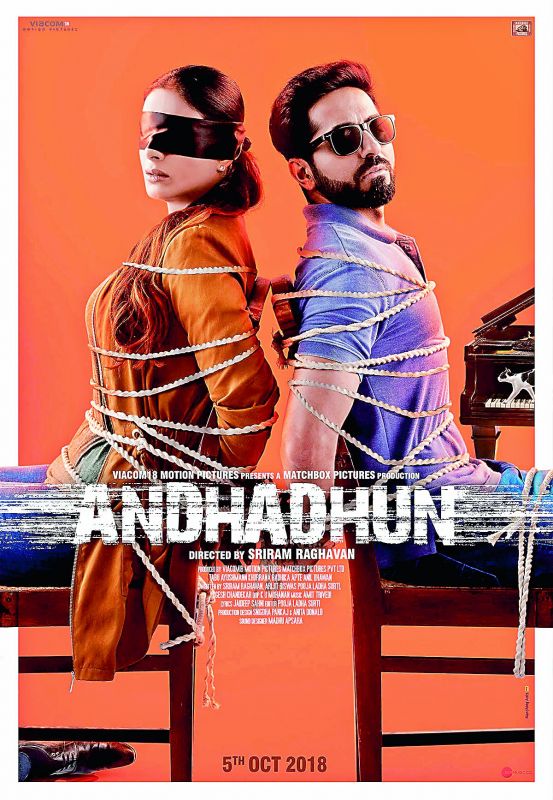 Tabu and Ayushmann Khurrana in Andhadhun.
Tabu and Ayushmann Khurrana in Andhadhun.
While mainstream cinema is changing gears, it is worthwhile to note that movies are no longer only in theatres or living rooms, but also on our devices, streaming wherever and whenever we want. Web-streaming platforms are exposing the audiences to genre-defying content at a speed that commercial cinema may find hard to keep up with. They have opened new doors for filmmakers, artists and audiences alike. Here, talent precedes the star and the bolder the subject the better the run. A wind of change has set the sails of Hindi cinema in the direction of refinement — with young writers, character artists, fresh stories and digitalisation keeping it afloat.
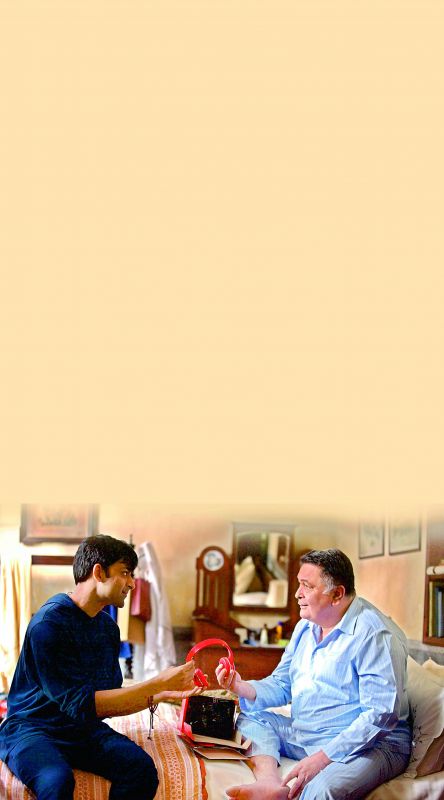 Rishi Kapoor and Anirudh Tanwar, playing father and son in Leena Yadav’s Rajma Chawal.
Rishi Kapoor and Anirudh Tanwar, playing father and son in Leena Yadav’s Rajma Chawal.
From Sidekick to Superstar:
A few years ago, a Hindi film featuring a middle-aged couple in the lead, wouldn’t have had many viewers. But Amit Sharma’s Badhaai Ho is at the forefront of this year’s best casting decisions.
The film is a realistic take on a middle-class household and their fear and loathing of a middle aged couple getting pregnant in full glare of an old-Delhi muhallah. Gajraj Rao who plays the amicable Jeetender Kaushik dabbles between his roles of a henpecked husband, a dotting father and a social misfit —who’s accused of making love to his wife at an inappropriate age in the film. His stellar performance brought him to the limelight in the 25th year of his career. Gajraj made his debut with Shekhar Kapur’s Bandit Queen in 1994 and has featured in Hazaaron Khwaishein Aisi, Dil Se, Black Friday, No Smoking, Talvar as also a few TVF web series. He says, “In our mythology there is a term called samudramanthan (churning of the sea), so right now whatever is happening is the churning of the entertainment industry where old thoughts are being sidelined, the old style of working is changing. New theories are coming, with new directors and a younger generation,” he narrates. The past few years have also seen the re-emergence of the undermined character artist whose roles were earlier akin to that of a wallflower. But today the character artist is a force to reckon with, their presence, at times, forms the whole and soul of a film and Bollywood is slowly embracing this development.
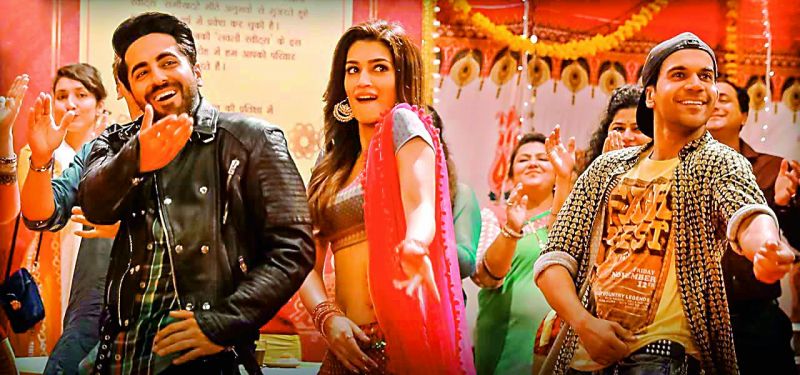 A still from Bareilly Ki Barfi starrring Ayushmann Khurrana, Kriti Sanon and Rajkummar Rao.
A still from Bareilly Ki Barfi starrring Ayushmann Khurrana, Kriti Sanon and Rajkummar Rao.
Veteran actress Neena Gupta who plays his wife in the film had never in her wildest dreams imagined of a time like this. She says, “I’ve never imagined getting a role in a commercial film that would go on to become successful,” she laughs, “One has done many roles but they have not been commercially successful, some of them have not even been released. So it is a very proud moment for me that such a good character of mine got a good production and a good release, this combination is very difficult to get.” The 59-year old- actress also believes that medium budget films such as these are having a good run at the box office primarily because the audience was never exposed to such cinema. “There have been many such movies such as Bareilly Ki Barfi, Vicky Donor that are small films, realistic films which are quite big hits. We should not think that the audience is stupid. The audience just never got anything else to watch,” says Neena. Trade analyst Amod Mehra shares the same sentiments, when he says, “The audience is beginning to realize that even films without big stars, but with great content, are fun to watch because, as we’ve seen, even a Thugs of Hindostan can flop.”
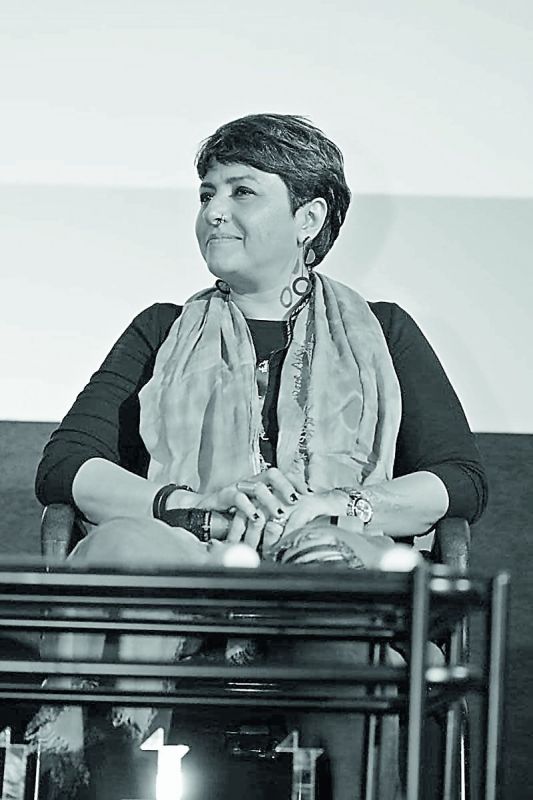 Leena Yadav
Leena Yadav
For many years, actor Pankaj Tripathi, has been a prominent face on screen in many a supporting role. Since his debut in 2004 with a blink-and-you-miss role in the Abhishek Bachchan starrer Run, he has featured in over 40 films and 60 television shows. But he marched to fame only in 2012, with Gangs Of Wasseypur and again last year with Bareilly Ki Barfi, Newton and this year’s horror comedy Stree, that gave him a fair share of screen time. He believes that good acting will always get its due, he says, “In my opinion an actor is an actor, I don’t believe in the term character actor. But I do believe that there is good cinema and bad cinema, good acting and abysmal performances. Today what has happened is that the audiences have grown and matured. The exposure to world cinema has been eye opening and this is exactly why the audience’s perception has shifted today. Good stories are also being written simultaneously and those who are doing good work are getting the appreciation they deserve.”
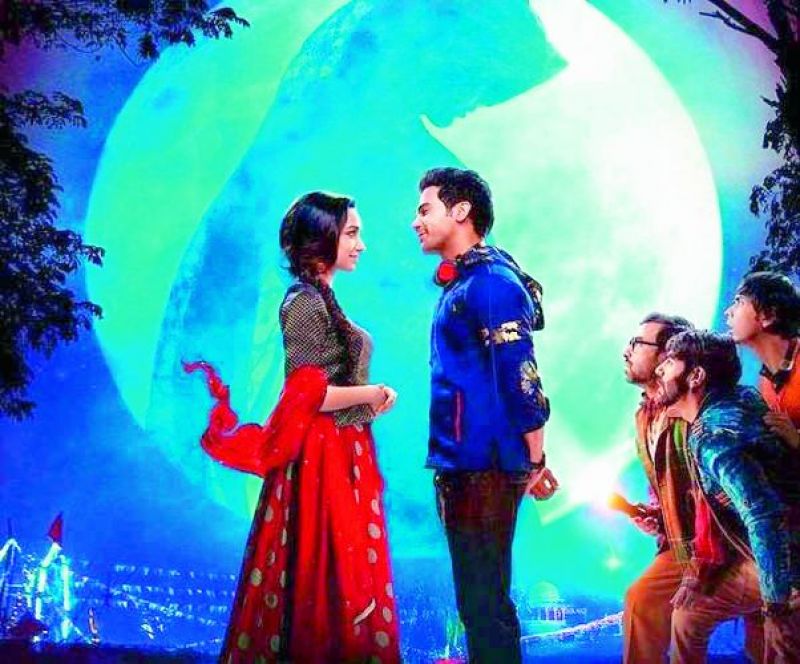 A poster of Stree starring Rajkummar Rao and Shraddha Kapoor.
A poster of Stree starring Rajkummar Rao and Shraddha Kapoor.
Actress Richa Chhada who also debuted in Gangs of Wasseypur as the firebrand, expletive-spewing Nagma Khatoon, expresses the same sentiments. She started out as a character actor and slowly rose up to gain commercial success. The actress, now a producer believes that cinema has always been driven by the audiences and they want what the want, “The audience tastes have changed and it has upped the game for the better. Now let's not take our audience for granted,” she convicts.
“It’s a great time for actors like us as we are getting more opportunities. It is the best phase because earlier character artists never got exposure but now writers are writing some great stuff for character artists who are also the backbone of all the films,” shares Rasika Duggal who featured in critically acclaimed films such as Kshay, Qissa and Manto and is currently seen in the Amazon web-series Mirzapur.
Realistic narratives:
At every step, it is the writers that have driven the different waves in Indian cinema. Today the aphorism ‘Content Is King’ is regaining its potency and the discerning audiences want their fix. A cursory glance at the sheer range of films that have been accepted by the audience in the past few years is proof that they want content that is strong, entertaining, relatable and engaging. As a result, the production houses are also taking note and rethinking their line-up. “Five years ago, good packaging with a decent amount of entertainment was all that the audience was happy with, but today that won’t suffice. To be really honest, this shift in the business and in our industry has happened about two years ago because any film that has been released this year is in the making for about 18 months to 24 months. So the disruption happened about four years ago where the audience stopped enjoying films that were packaged well as opposed to told well – and there’s a big difference,” believes Priti Shahani, President at Junglee Pictures. In the last two-years, Junglee Pictures have established themselves as a production house that is a hit-vending machine with films such as Talvar, Raazi, Badhaai Ho and Bareilly Ki Barfi. Priti also points out that art is always inspired by environment and cinema is no different. It is both an art and science. “If you look at the stories, including the stories we tell, they are the ones you have in your surroundings, which is why relatability and entertainment are the two key factors today,” she explains.
It wouldn’t be an understatement to say, relatable cinema is the bedrock of change in society as opposed to the larger-than-life fictionalised narratives that give cinema its virtue of escapism. Parallel cinema has entered the mainstream and continues to mirror and mouthpiece society. Although today more than realism, the audiences are vying for relatability. Cinema has been an imminent social tool in shaping the mindset of the milieu. Much like what Audrey Hepburn once said, “Everything I know I learned at the movies.” “The good thing that is happening is the milieus being explored in modern Hindi cinema are those, which are real because they are coming from writers who are familiar with them. A lot of these new writers are actually from small towns. So when they want to write a story, they choose a territory, a milieu, and a world that they’re familiar with. And these are the worlds – A Bareilly Ki Barfi world or a Badhaai Ho world, which they are very familiar with,” says screenwriter Anjum Rajabali.
He follows his proposition with an example of the film Stree, “Here the story is working not because of the ghost plot, it’s because of the chemistry that you notice in this world and what is happening to these men, their perceptions, relationships and frustrations. It feels like these are people you know and it becomes very attractive to us. Why? Because Sumit Arora (dialogue writer of Stree) who’s writing about it knows this world, he knows these characters; he’s coming from there. Likewise, Jyoti Kapoor writes the story of Badhaai Ho — she knows that world. All she has to do is imagine that within this world if something unusual was to happen — a middle-aged lady with a grown-up son getting pregnant…and your imagination is fired. It is the script that is the golden key to opening all these doors,” he adds.
Retatablity is magnetic. You get engaged with characters and stories that you can relate with, people and places you know and understand and then if those characters stand out and entertain you-you know it is working, says Priti. “One of the conversations we have with our writers is, we think that fiction is not keeping in pace with our reality. Relatability refers to any film that is rooted culturally. If you look at the success of Bahubali, it is because we accept mythology. Our stories come from our mythology. If you create a world that reflects mythology, you will get into us,” she explains.
Digital wave:
Streaming giant Netflix acquired the worldwide distribution rights to Andy Serkis‘ long-gestating film Mowgli from Warner Bros and released it recently on its platform. Andy who was in India to promote the film feels that “streaming is a wonderful thing” and there is room for both (theatres and digital platforms). It's really important that we have a shared experience that we can watch films all together but also we get to choose to watch films just with our family or individually,” he says. Back home, Rishi Kapoor’s Rajma Chawal, premiered on Netflix last month and explores new mediums of storytelling. Even though the film uses food as a metaphor in its title, releasing the film on Netflix draws parallels to the theme. Director Leena Yadav explains, “My film deals with two generations (father and son) and accepting of technology into communication is the major part of my theme in the film. So I thought as a filmmaker I should probably take that step and accept technology. Also for the simple reason that it has such a wide reach and as a filmmaker what else do you want?” she asks.
It is true that digitalisation surpasses all boundaries of time and space and it is the preferred option of the gen-next. The evolution of cinema revolves around its digital innovations — all in a bid to reach a wider audience. From single screen to multiplex, television to laptop and even mobile phones today, cinema travels to multiscreens. “Earlier we had very limited content and thought that is what defines entertainment. Thereafter people through television, through different channels started seeing a lot more content. If you’ve noticed through the years peoples taste got a lot more refined. Not every film is for everybody, which is fine because it has to find its audience and the audience has to find the film,” says Leena.
But does this mean that multiplexes might soon dry out and die out? and pat comes the reply, “I don’t think it’s a choice, I don’t think its either or will survive. I think content will find its space, so there will be some content that will be for the theatres and some will be for digital and time will decide that. I don’t think this comes as a replacement to theatre,” she says.
One thing is set in stone — The digital medium will not only bring in a plethora of path-breaking content but will also bring in a large variety of talent; both on screen and behind the screen. For instance, Pankaj Tripathi has bagged his meatiest role yet as the ferocious and daunting Kaleen Bhaiya in the crime thriller web series Mirzapur. His screen presence is palpable and his acting prowess makes one mull over the ivory tower of Bollywood that rides on the back of its superstars to secure sure shot success, while undermining real talent. But his foray into the digital space doesn’t make the big screen less enticing for him, especially as an audience. He says, “Cinema has its own draw. There is something about community viewing that is very compelling. It breaks all class barriers, you don’t bother to think about who is sitting next to you, what class background he comes from. Watching a film in complete darkness on the big screen is unparalleled.”
He also throws light on the absence of censorship in the digital space that might make it more alluring for actors and filmmakers who are now basing their feet in this space, “There is freedom here. Censorship hasn’t reached here yet, but at the same time an actor like me works with the morals of self-censorship. We know the line between aesthetics and vulgarity and we’ll not delve into something knowing its main motive is to create sensation. But yes, there could be many that will exploit this space, but a good filmmaker will never exploit his or her liberties.”
His co-star Ali Fazal in Mirzapur, has certainly got another chance at resurrecting his career in the digital space, much like Saif Ali Khan who got a new lease on his acting career with the Netflix Originals Sacred Games. Ali says, “Digital is growing, and yes it is giving films a tough competition. Films have to cut down on their budgets and it has proven to be successful so far, but the digital space is beyond that. It can be made in much lower budgets and garner much more viewing.”
But the convenience of the digital space can prove as much a disadvantage to filmmakers, as it is an advantage to the audiences. And given how easy it is to switch between TV-shows and films on Netflix, the competition gets tougher and the audiences are far more critical. But none of this inhibits Leena. She says, “If you have to lose an audience you can lose them in the theatre too. People walk out; people go off to the bathroom there too. So if you have to lose an audience, you lose them either way. Yes, it is a little more challenging because you can just pause it and switch between shows, but then again that’s the test your film stands." Filmmaker Abhishek Kapoor who’s film Kedarnath released two weeks ago believes that nothing can dim the lure of a cinematic experience, “because cinema is a different experience and digital is something you see at the house. Going to the theatre and watching it with 200 – 300 people and they all are experiencing the same thing, you enjoy that experience. So irrespective o
If whatever is happening that cinematic experience will never fade away.”
